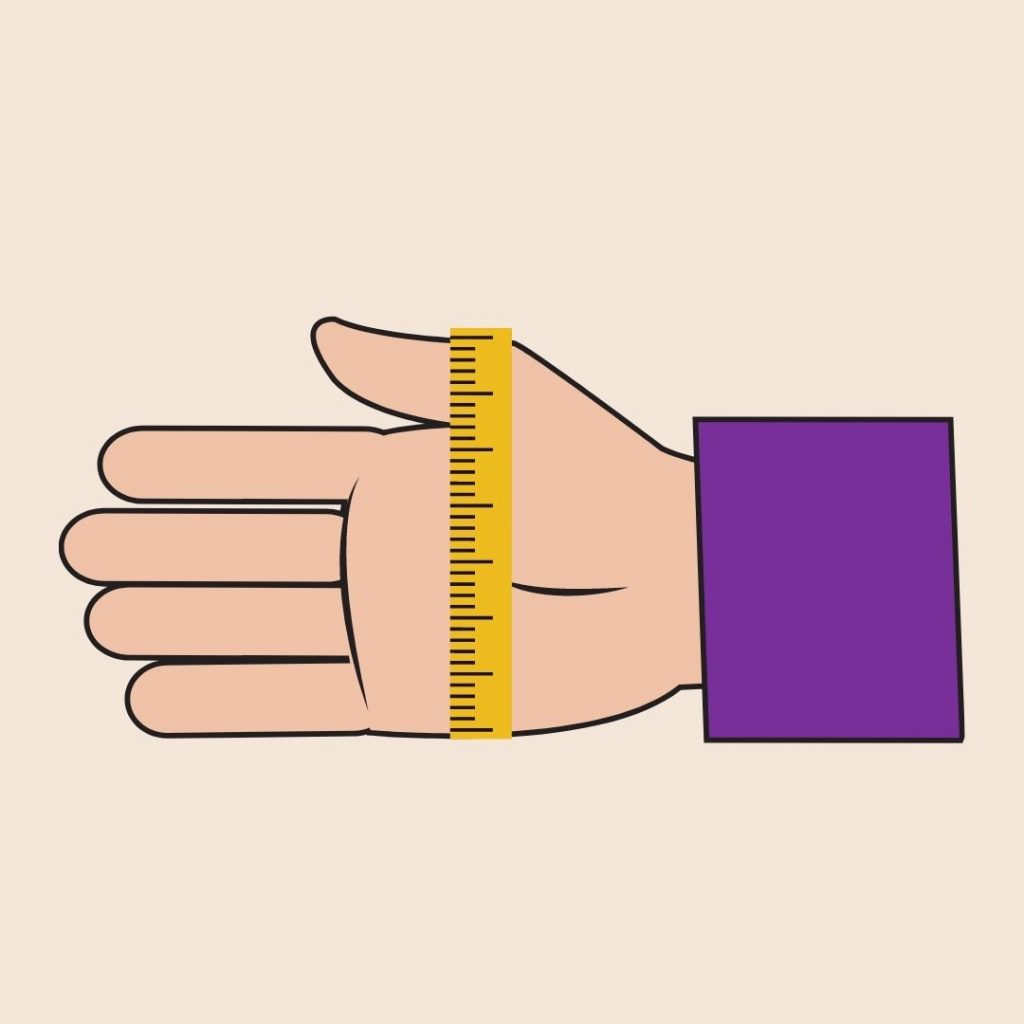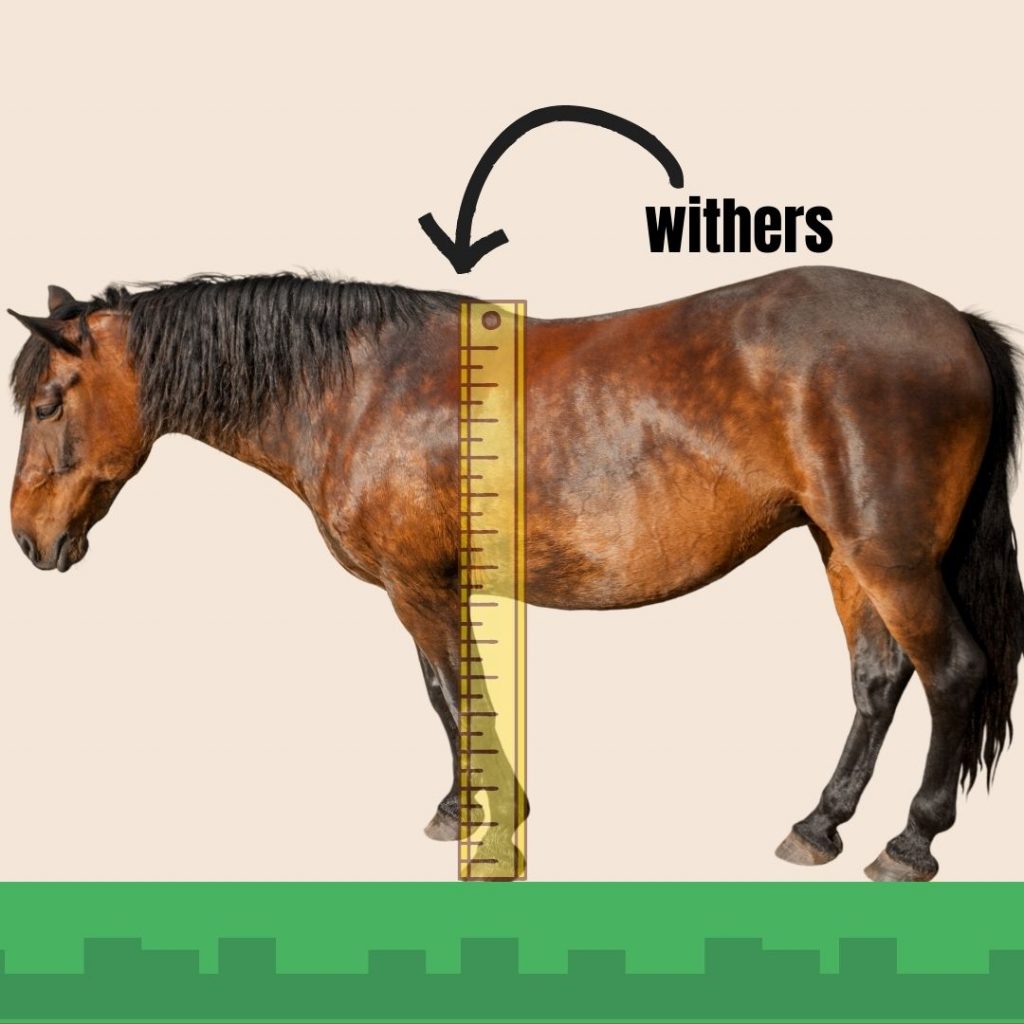Horses are measured in hands (in the horse world a hand is 4”) but hands have been a measurement tool for centuries before standardized measuring systems existed. The hand was standardized to mean 4” for measuring horses during the rule of Henry VIII in 1540. He spent a lot of time breeding and importing horses for war and wanted to standardize the height requirement for breeding. More on that later – first, let’s go back to basics.
A hand is measured from an open hand (with all your fingers close together) with the pinky side of your hand parallel with the floor. You measure from the bottom of your hand in this position straight up to the base of your thumb.

All horses are measured by this standard from level ground up to their withers (the base of their mane right before their back).

If a horse measures between hands then you count out the inches. For example:
14 hands = 14 hh (hands high)
14 hands and one inch= 14.1 hh
14 hands and two inches= 14.2 hh
14 hands and three inches = 14.3 hh
14 hands and 4 inches = 15 hh
Once you reach 4 inches you go up to the next hand and the process starts over. There will never be a 14.4 or 14.5 etc.
Fun Fact: The difference between ponies and horses is purely based on their height. 14.2 hh and under is considered a pony, 14.3hh and up is considered a horse.
Henry VIII spent a lot of time on his breeding program and wanted “no stallions under 15 hands and no mare under 13 hands” to be bred. Which created more effective cavalry during war and to do that a standardized system needed to be put in place.
The horses you see in movies today about war are big and bold horses but in reality the war horses were more along the lines of stout ponies. Now you know!
Cheers!
B
